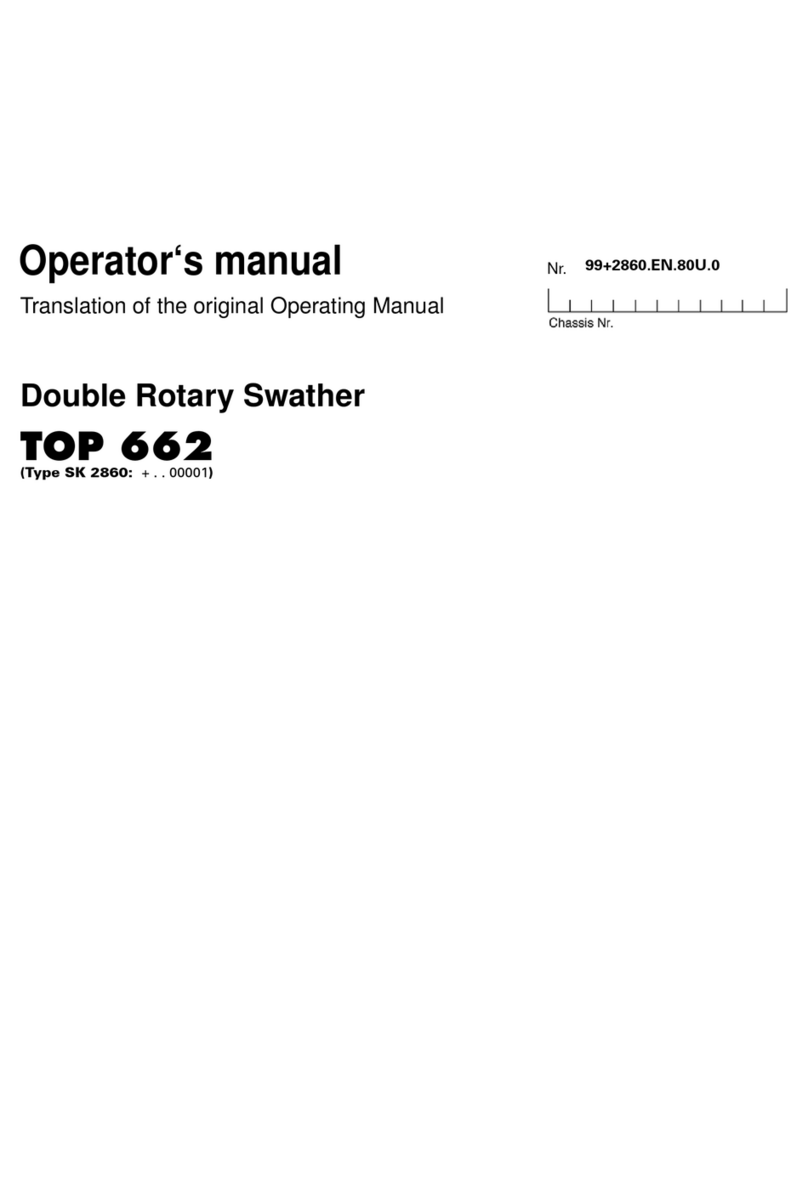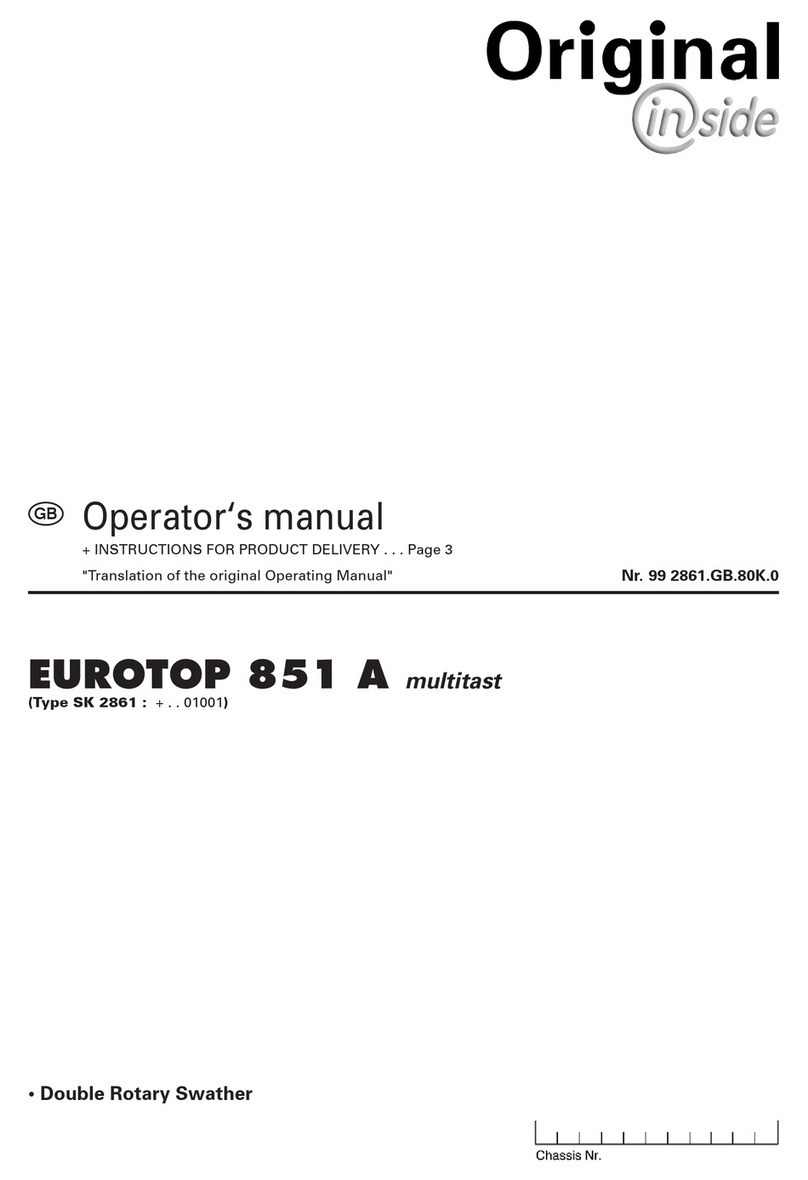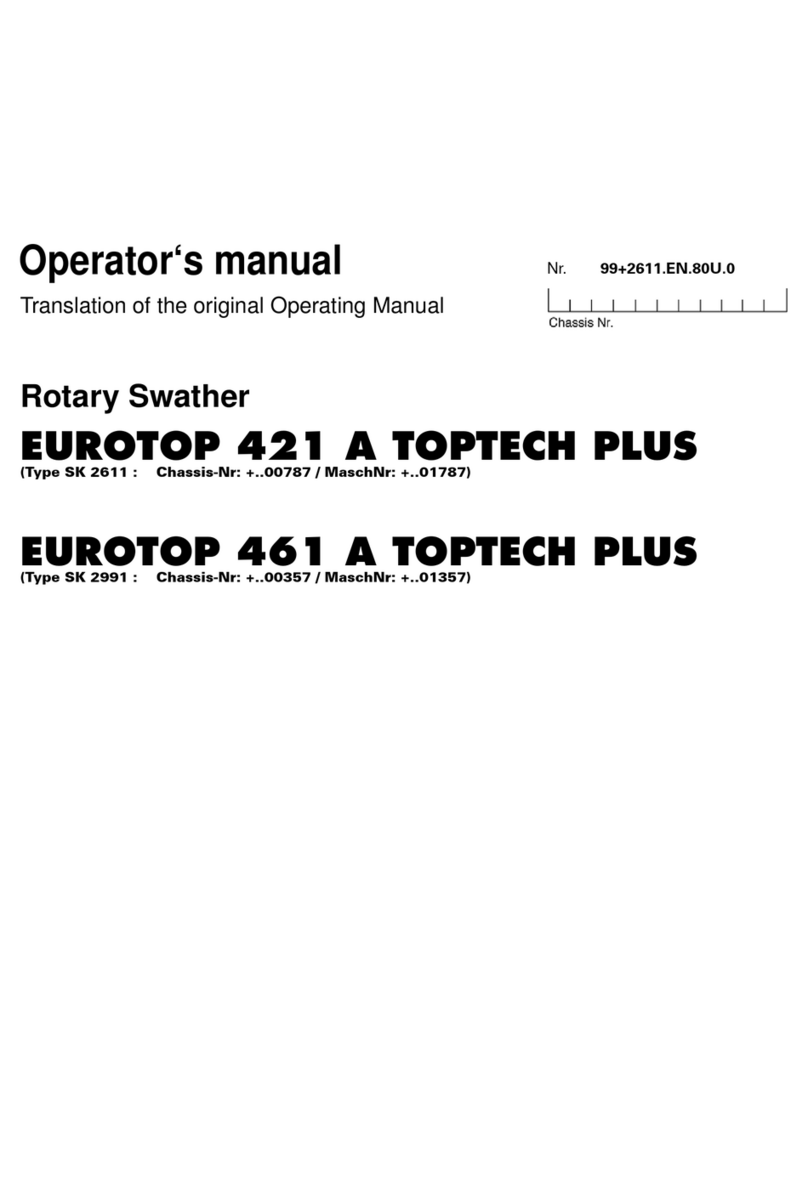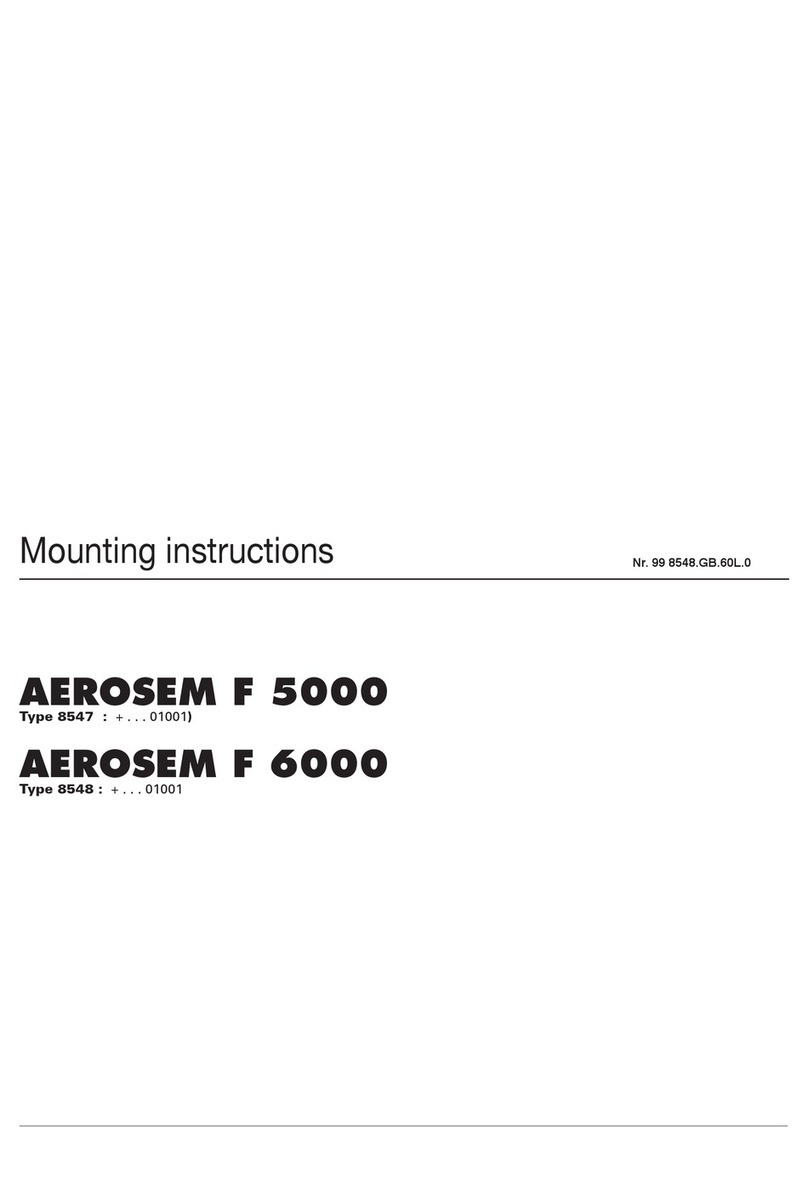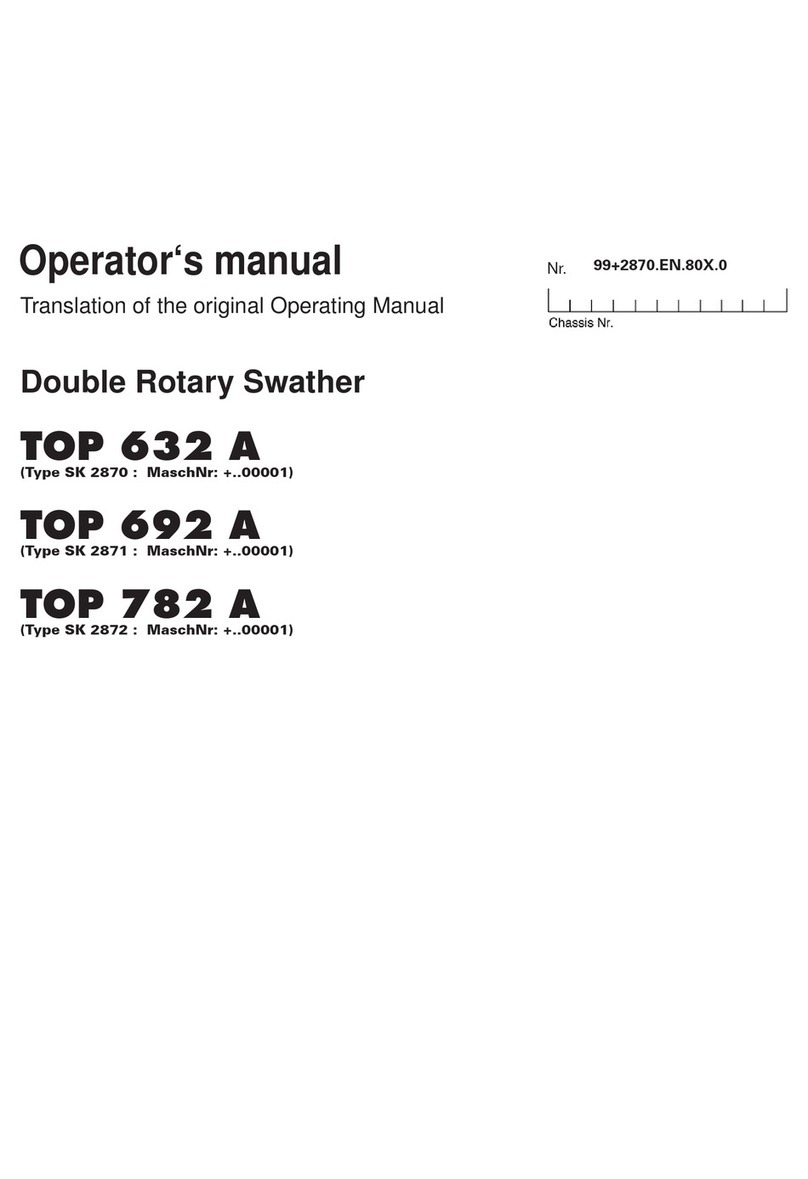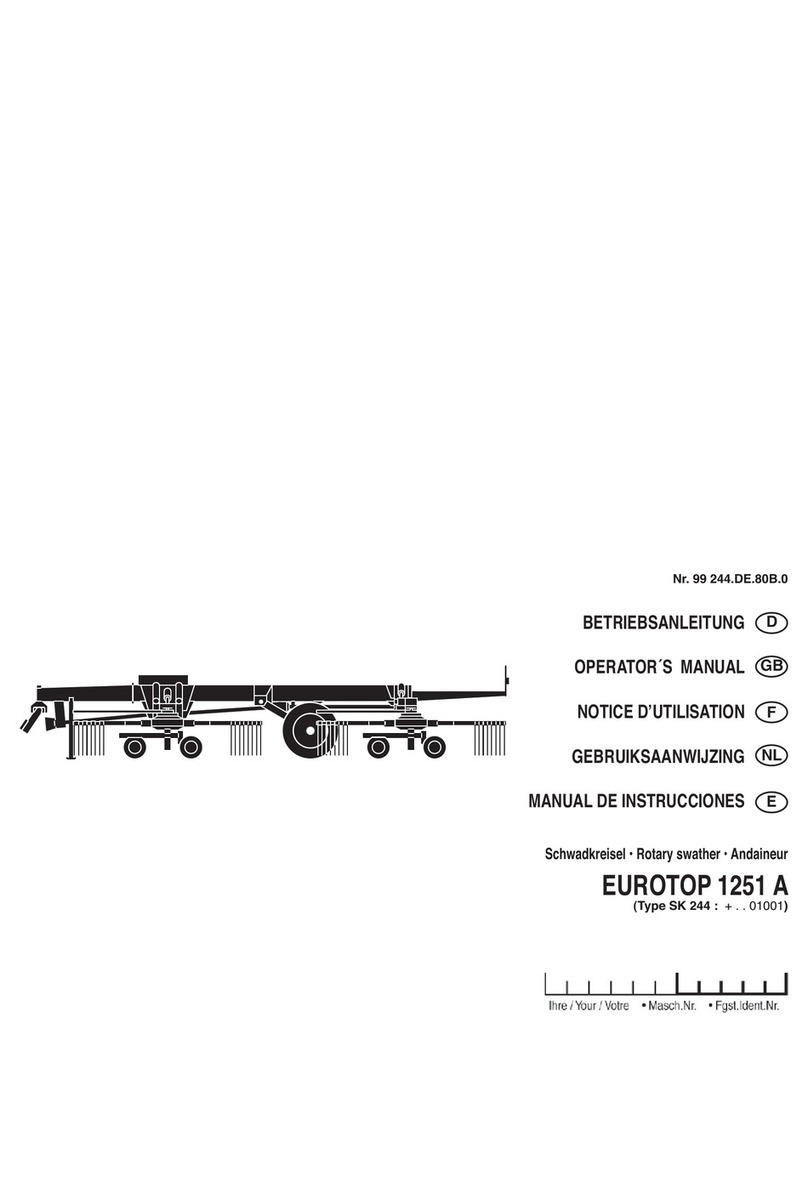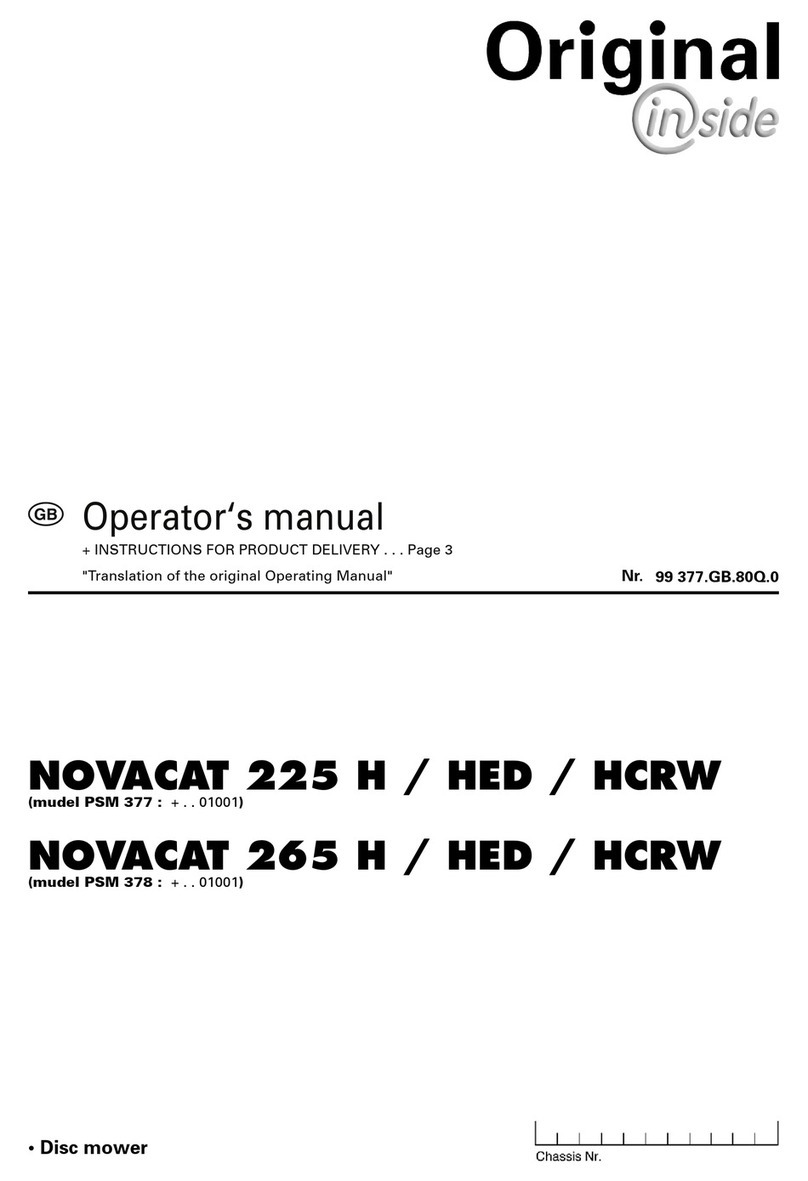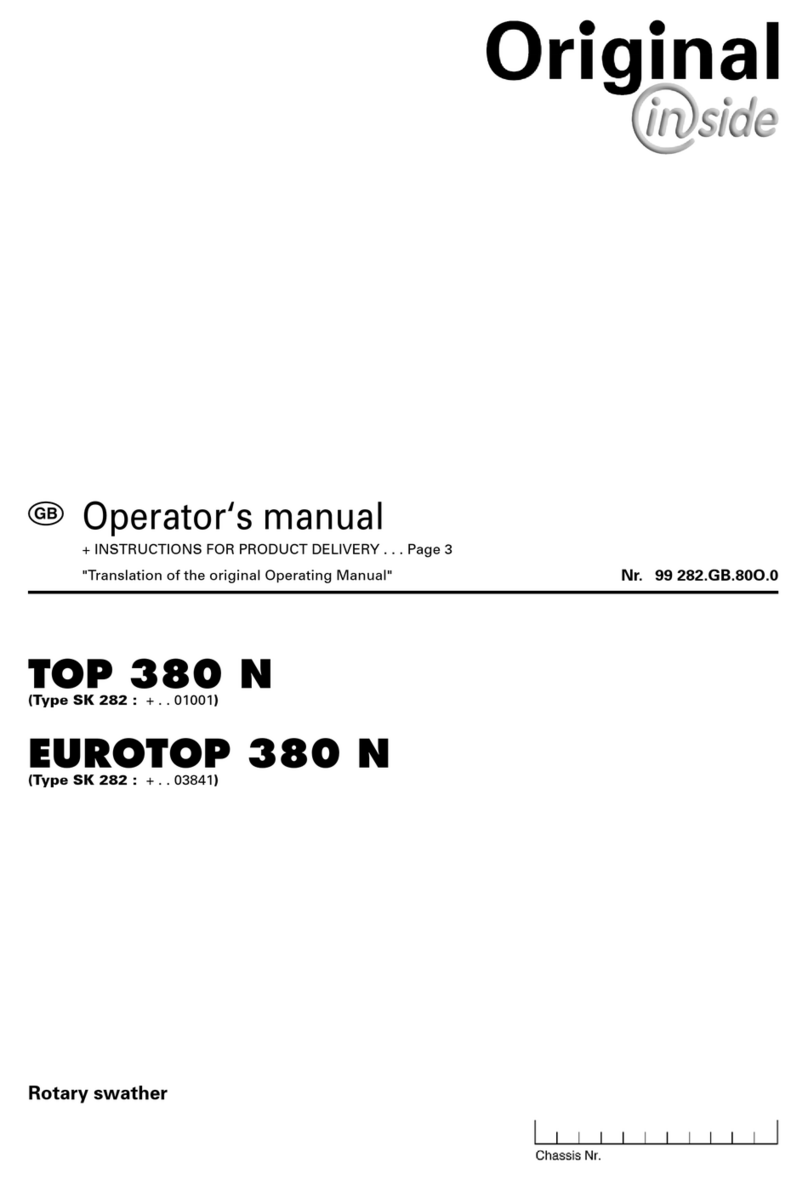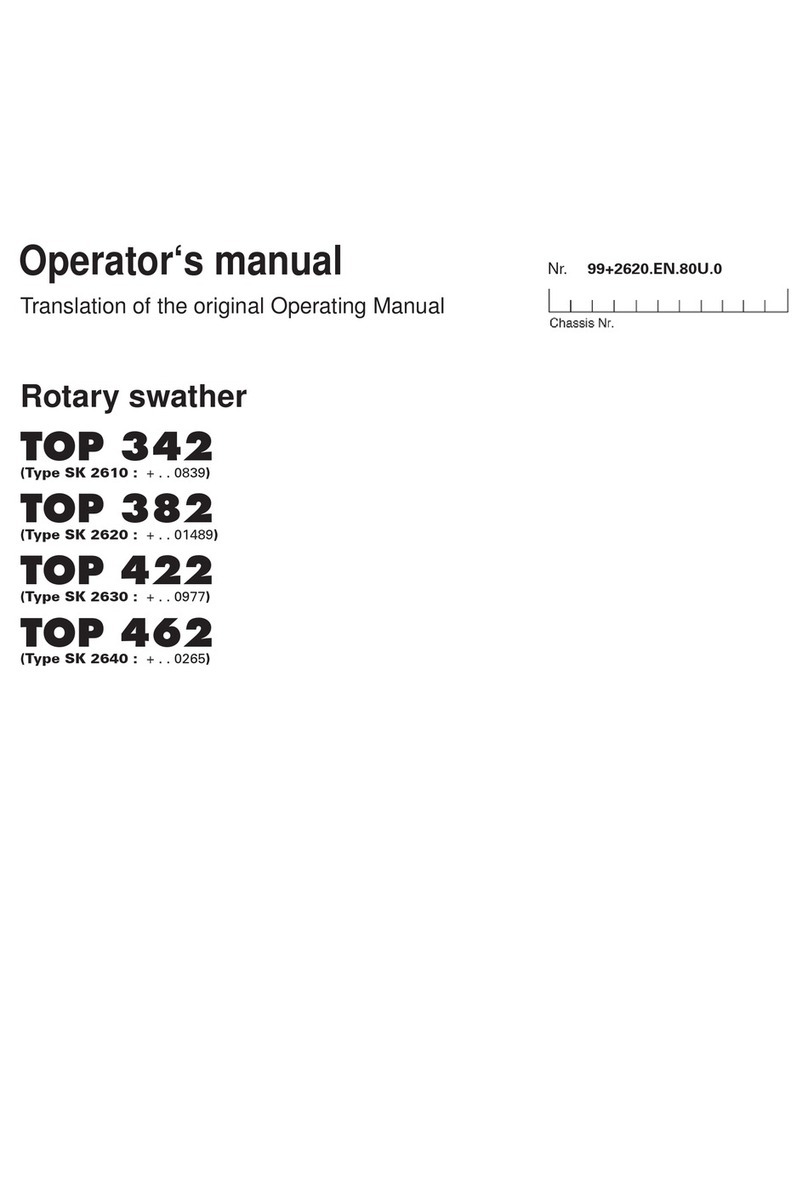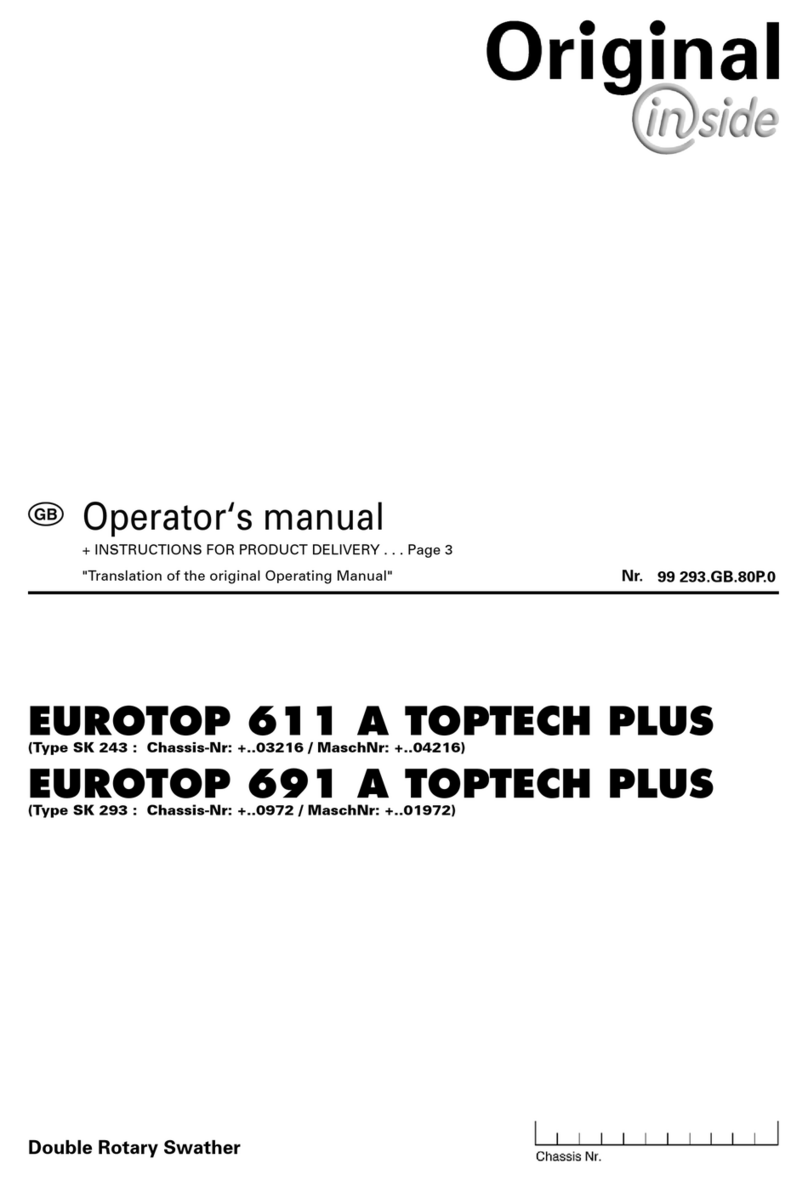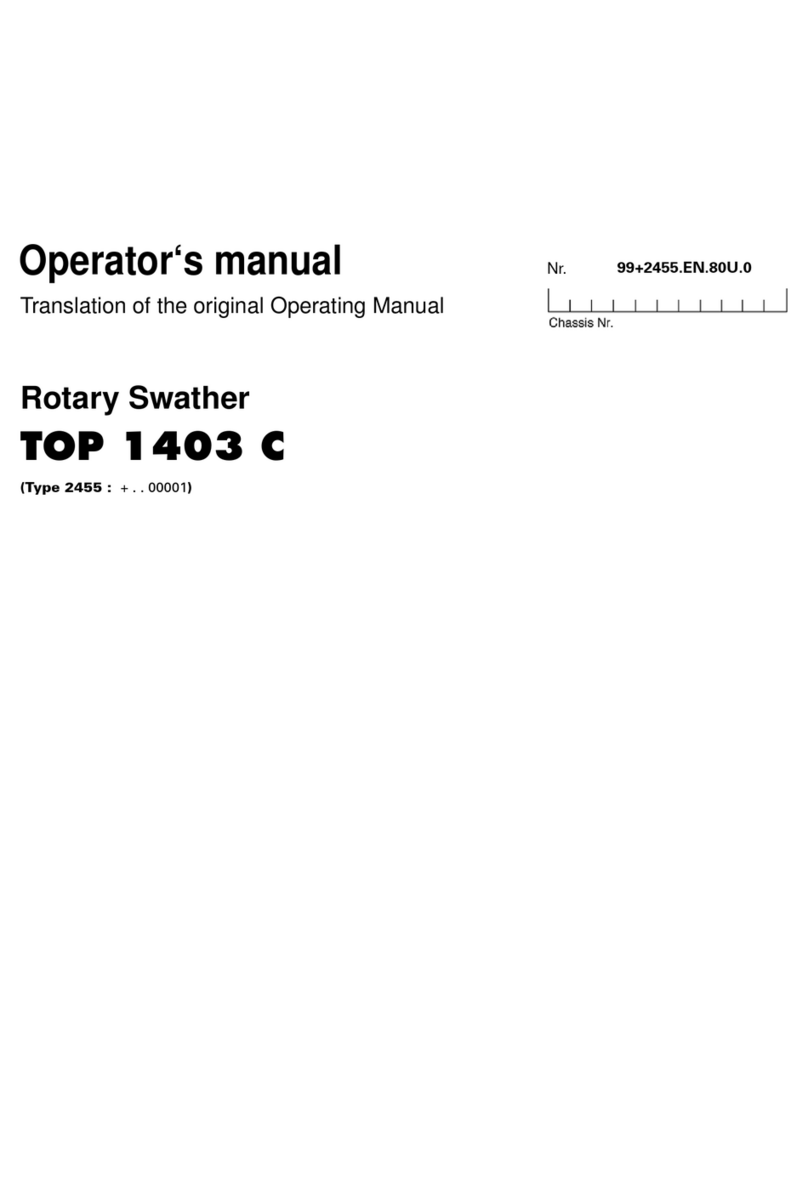
- 4 -
1600_GB-INHALT_2740
GB
TABLE OF CONTENTS
Observe
Safety
Hints in the
supplement!
Table of contents
TABLE OF CONTENTS
CE sign ...................................................................... 5
Meaning of warning signs.......................................... 5
GENERAL SAFETY TIPS
Travelling with implement in tow ................................ 6
Coupling and uncoupling the implement ................... 6
Regulations for Use ................................................... 6
Travelling on roads..................................................... 6
Before starting work................................................... 6
Checking before operation......................................... 6
Overview.................................................................... 7
SPECIFICATION
TRACTOR REQUIREMENTS
Tractor........................................................................ 8
Ballast weights........................................................... 8
Lifting gear (three-point linkage)................................ 8
Necessary hydraulic connections .............................. 8
Power connections required ...................................... 8
ATTACHING THE MACHINE
Before initially attaching the machine ........................ 9
Attaching the machine ............................................... 9
Parking the machine ................................................ 10
OPERATION
General guidelines on working with the machine .....11
From transport position to working position ..............11
From headland position to working position............. 12
From working position to headland position............. 12
Settings on rotor chassis.......................................... 12
1. Set lateral incline.................................................. 12
2. Adjusting rake height ........................................... 13
3. Aligning the indicators...........................................14
Example - left rotor with tandem chassis: ................ 15
Cardan shaft speed ................................................. 16
Swath apron (optional equipment)........................... 16
Single rotor operation (variant) .................................17
Hydraulic working width adjustment .........................17
Setting the curved track........................................... 18
Setting the headland height (both sides) ................. 18
TRANSPORT
From working to transport position........................... 19
From headland to transport position ........................ 19
Tine arm holder operation........................................ 20
Driving on public roads ............................................ 20
Machine dimensions in transport position................ 21
Reducing the transport height.................................. 21
Tine covering ........................................................... 22
WORKING ON SLOPES
Take care when turning on slopes! .......................... 24
Safety advice ........................................................... 25
General maintenance information............................ 25
Cleaning of machine parts....................................... 25
MAINTENANCE
Parking in the open.................................................. 25
Winter storage.......................................................... 25
Cardans ................................................................... 25
Hydraulic unit........................................................... 25
MAINTENANCE
Transmission............................................................ 26
Chassis.................................................................... 26
Set tyre tracking ...................................................... 27
Tyres ........................................................................ 27
Tine arms................................................................. 27
Rotor unit ................................................................. 28
Lubrication diagram ................................................. 30
Spring tines.............................................................. 32
Maintenance Setting the working width ................ 32
Lubrication chart ...................................................... 33
TOP 842 C/ TOP 962 C hydraulic plan................... 34
HYDRAULIC PLAN
TOP 842 C/ TOP 962 C hydraulic plan with single
rotor operation ......................................................... 35
TECHNICAL DATA
Technical data.......................................................... 36
Connections required .............................................. 37
Optional equipment:................................................. 37
Variations:................................................................ 37
Use of the swath rotor as intended .......................... 37
Type plate ................................................................ 37
Tyres ........................................................................ 38
SUPPLEMENT
Lubricants ................................................................ 48
Combination of tractor and mounted implement.......51
